Brazilian coffee hand brewing method introduces the brewing method of yellow bourbon coffee beans in Brazilian Queen's Manor.
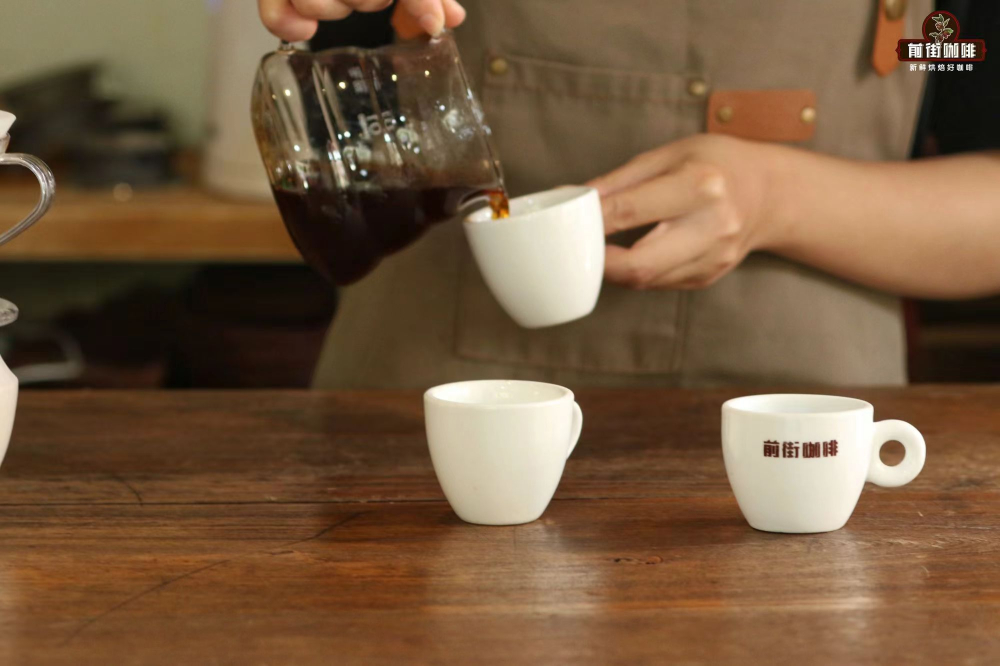
When it comes to the country of Brazil, the first thing that comes to mind is football, but as a coffee man, coffee beans are the first thing that comes to mind in Qianjie. Brazilian coffee belongs to the classic mellow flavor faction, which is famous for its excellent balanced taste. Today, Qianjie will talk about how to break out the "Brazilian flavor".
Brazilian yellow bourbon variety
Qianjie learned through reading materials that the varieties of Arabica coffee in the world are made up of iron pickup and bourbon and their descendants. Bourbon and its descendants, which are popular in Central and South America, are spread all over the world, and they are still the main cultivated varieties in many countries, such as excellent varieties such as Kaddura (Caturra).

Bourbon is named after Bourbon, the island of Reunion on the east coast of Africa. It was named Bourbon as a French dependency in the 17th century and was not renamed until the end of the 18th century. In the 18th century, the French introduced round coffee beans from Yemen to the island of Bourbon and began to take root until Brazil brought Bourbon back to its home country in 1860, and then spread to various countries in Central and South America, becoming the oldest Latin American coffee mother species.
Bourbon varieties have short, round fruit, high density of coffee beans, high sweetness and bright sour taste of bourbon grown at high altitude. It is also an ancient and excellent variety with Tibica. Bourbon has better resistance to rust leaf disease than Tibica, and its flavor does not lose Tibica. The most common thing between bourbon and Tibica is that there must be shade trees to block the sun, which is conducive to growth and flavor development, so there are certain requirements for the growth environment.
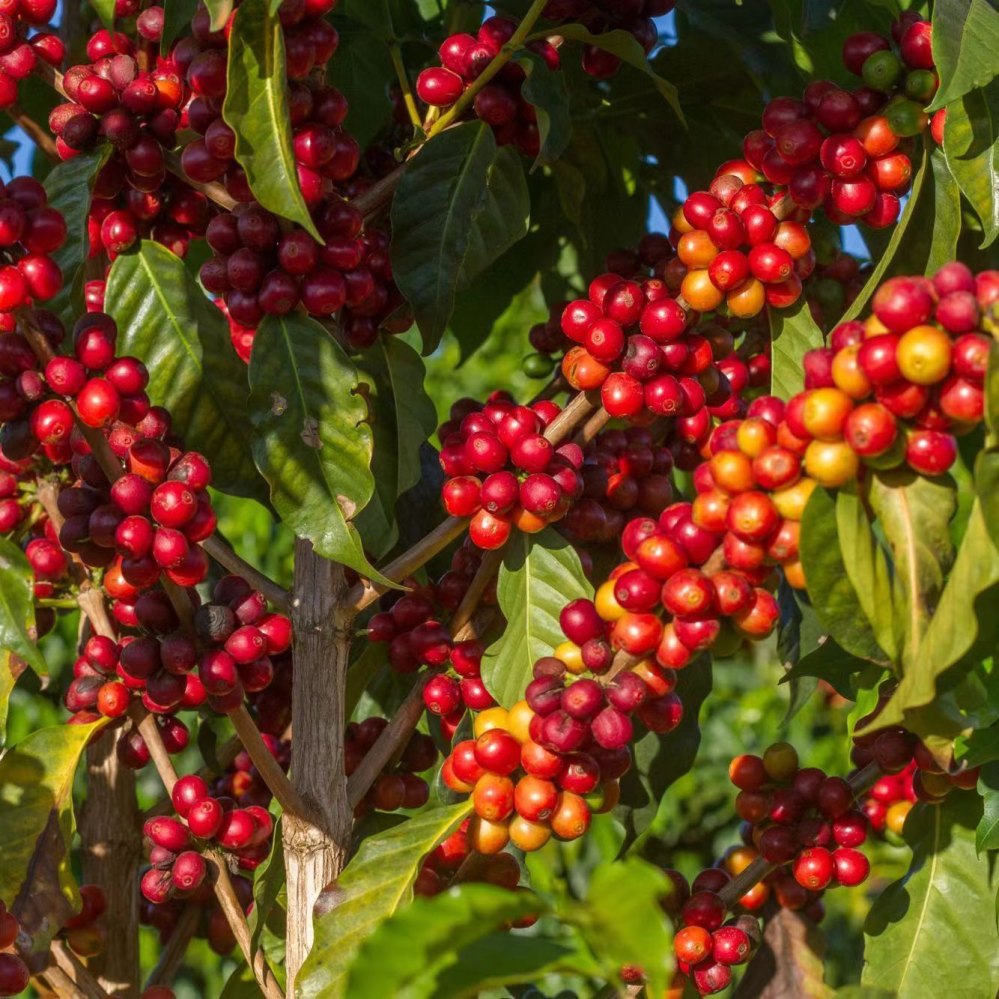
From flowering to fruiting, the common bourbon gradually changes from green to yellowish, red, and finally to a fully mature crimson, so it is called red bourbon. In addition, there are bourbon varieties that do not turn red after maturity, which turn into the more rare yellow or pink, that is, yellow bourbon and pink bourbon. The yellow bourbon produced at high altitude, with its exquisite flavor, once won the top place in the CoE Excellence Cup in Brazil. The Queen's Manor Coffee on the front street is selected from Yellow bourbon Coffee, which is produced in Mojiana, Brazil.
Brazilian Queen's Manor Coffee
Traditionally, Brazilian coffee producing areas that give priority to mass production are mostly planted in flat areas at low elevations, so the flavor of the coffee produced is relatively mild and not prominent enough. Queen's Manor (Fazenda Rainha) is a rare high-altitude farm in the area. the ideal hilly terrain and the right climatic conditions make the yellow bourbon coffee here with a rich pectin layer, making the coffee more sweet.
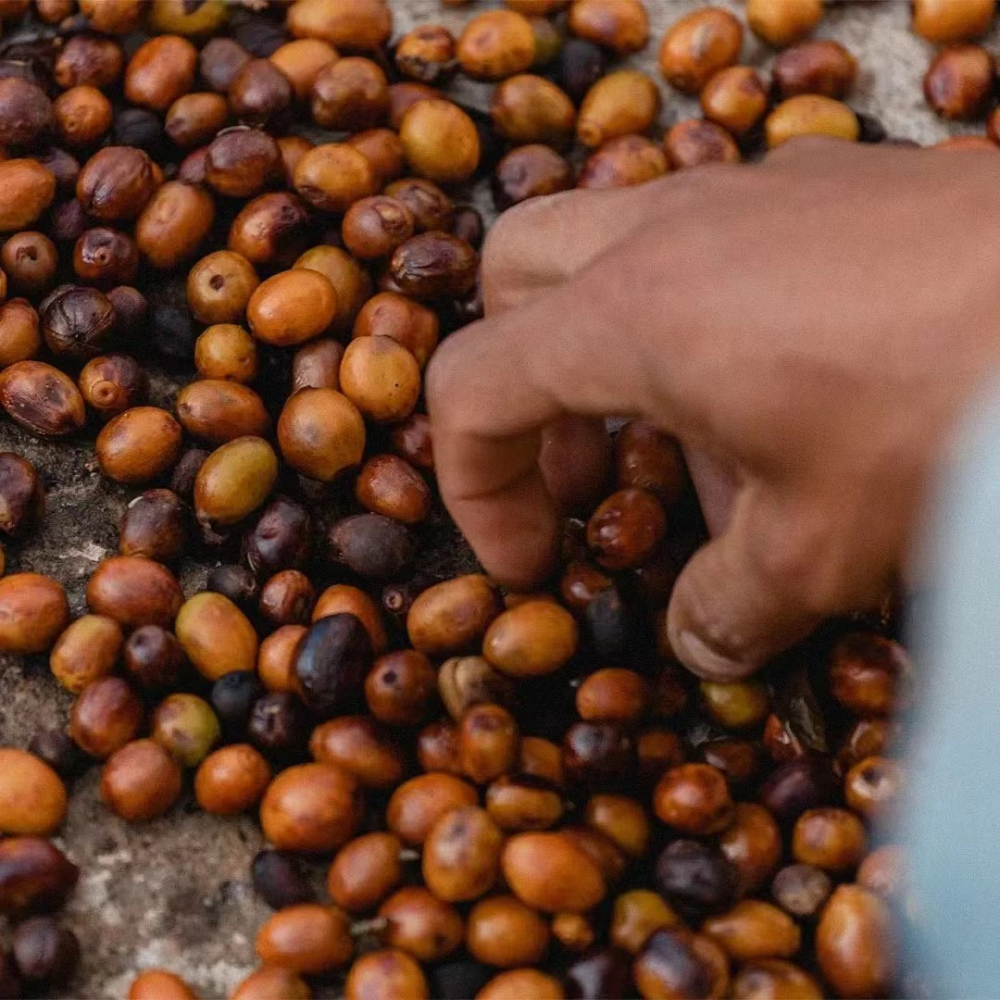
The traditional sun drying is to pour the coffee fruit into the cement ground to dry, because the coffee produced by rough treatment is easy to have miscellaneous smell such as soil and unpleasant excessive fermentation feeling. The Queen's Manor pours the fruit into the sink before drying and floats to remove the undermature fruit. In order to avoid the smell of soil and fermentation, the Queen's Manor spread the coffee fruit on the African viaduct throughout the process, arranged for the staff to turn regularly to reduce the uneven heating, and keep the coffee as clean as possible.
Queen's Manor Coffee hand reference
Qianjie wants to highlight the classic regional flavor of Queen's Manor, that is, mellow chocolate aroma, so Qianjie uses medium-deep baking. Through the cup test, Qianjie tasted the sweetness of this queen's manor, so three-stage water injection was used in brewing, hoping to show more layers of coffee.
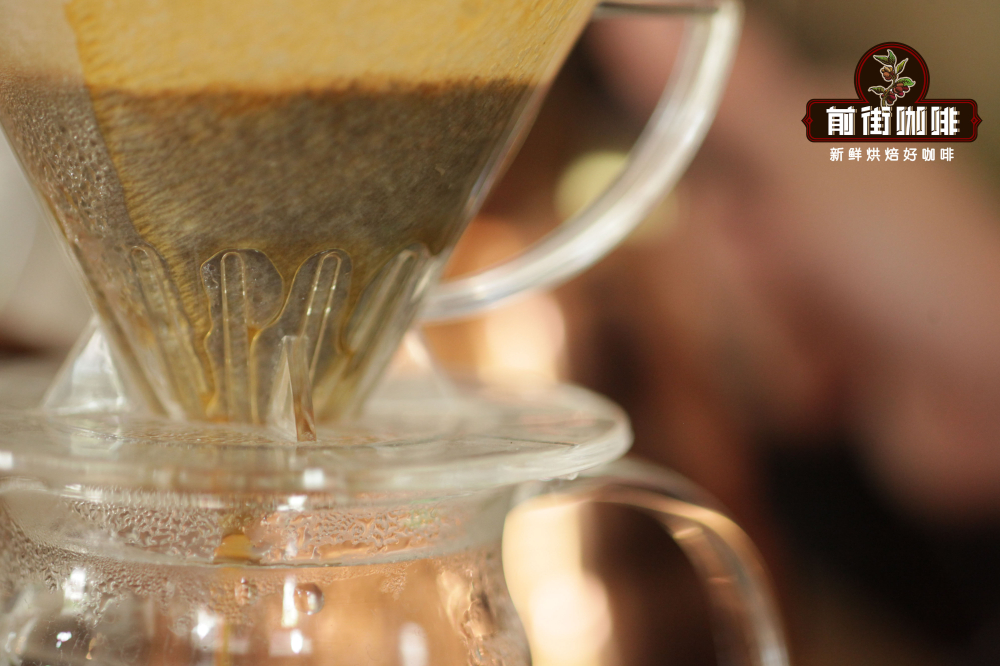
Since coffee beans enter the best taste period 4-7 days after roasting, after this time (about a month and a half after roasting) the aroma of the coffee may have been lost and some wood flavor has been formed. In order to avoid this situation, Qianjie has been mentioned in many articles. The most important thing is that Qianjie only delivers freshly roasted coffee beans within 5 days, so that people can taste coffee with good flavor.
Filter cup: medium and deep roasted coffee beans mainly show a mellow and round taste, in view of this characteristic, Qianjie will choose the slower flow rate KONO filter cup for extraction. The upper part of the KONO is a smooth surface and the bottom is a 1/3-long diversion rib. It can make the filter paper fit better with the filter cup, limiting the air flow up, and the hot water can only flow down, forming the effect of siphon extraction, so that the aroma substances of coffee powder can be released more fully.
Grinding degree: considering the deepening of roasting degree, the texture of coffee beans will become loose, after grinding into powder, it is easy to absorb more water and release more soluble substances, which is easy to bring out unpleasant wood and other bitterness. Baristas in front of the street will thicken the grinding degree to make the coffee powder particles larger and reduce the over-extraction of coffee. Medium grinding is used here (the pass rate of Chinese standard No. 20 screen is 70-75%)
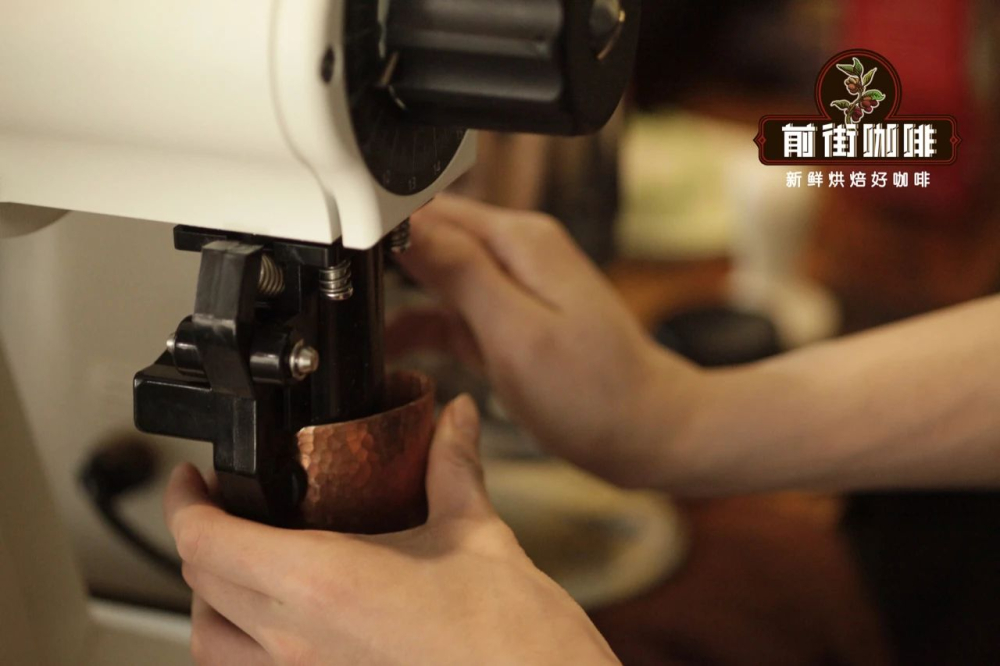
Water temperature: when cooking light roasted coffee beans, Qianjie will use higher water temperature to release the aromatic substances of high-density coffee beans. On the other hand, the medium-to-deep-roasted Brazilian coffee has gone through a longer caramelization reaction, and if the same high temperature hot water is used, the coffee is easy to show a strong and scorched bitter taste. Properly lowering the water temperature can help us reduce some bitterness. The water temperature of 87-88 ℃ will be used in Qianjie.
Coffee powder will absorb about twice as much water as it does. 15 grams of coffee powder is usually used in Qianjie. It is extracted according to the ratio of 1:15 to water, and finally the coffee liquid close to 200ml is extracted, that is, 1 to 2 servings of coffee.
Filter cup: KONO filter cup
Water temperature: 87: 88 ℃
Amount of powder: 15g
Powder / water ratio: 1:15
Degree of grinding: medium degree of grinding (Chinese standard No. 20 screen pass rate 70%)
Moisten the powder bed with twice as much water as coffee powder to form a drum and steam for 30 seconds, then fill the small water circle from inside to outside to 125 g, wait for the powder bed to drop to half of the filter cup, and continue to pour the same fine water into the third section to 225 g, until all the coffee liquid has been filtered and the filter cup has been removed for about 2 minutes.
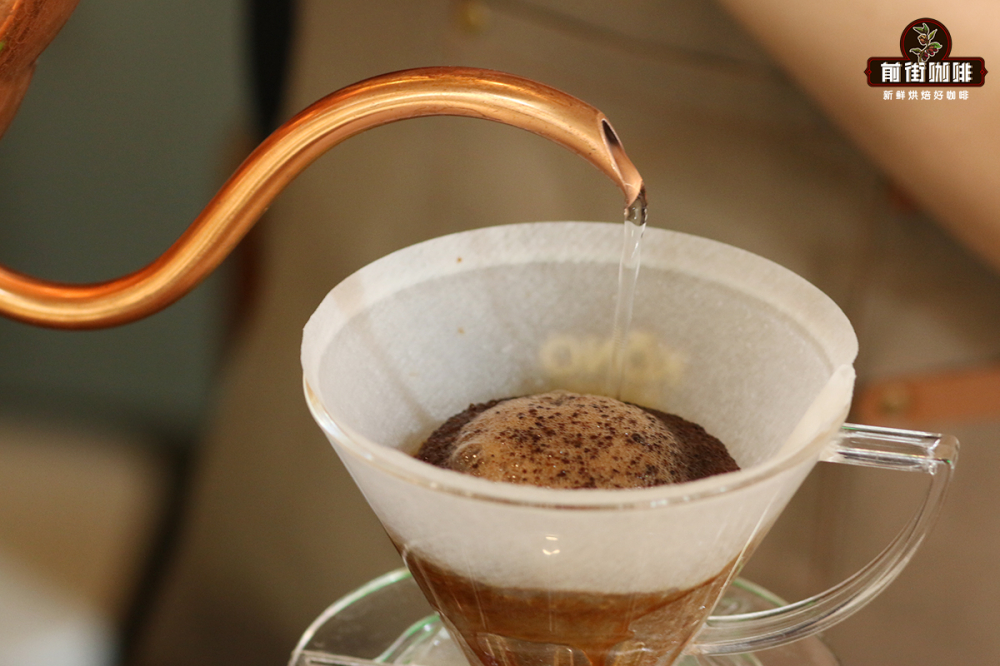
Hand-made Brazilian Queen's Manor coffee smells of lemon, nuts and peanuts, with very mellow flavors of nuts, dark chocolate and caramel, obviously sweet, smooth and round as a whole.
Professional coffee knowledge exchange more coffee bean information please follow the coffee workshop (Wechat official account cafe_style)
For more boutique coffee beans, please add private Qianjie coffee on Wechat. WeChat account: qjcoffeex
Important Notice :
前街咖啡 FrontStreet Coffee has moved to new addredd:
FrontStreet Coffee Address: 315,Donghua East Road,GuangZhou
Tel:020 38364473
- Prev

Characteristics of coffee in Uganda Coffee planting conditions in Uganda Coffee growing areas
For more information on coffee beans, please follow the coffee workshop (official Wechat account cafe_style) Coffee growing in Uganda is located in the eastern part of the country, straddling the border between Uganda and Kenya. Judging from its huge base, Mount Elgon was once considered to be the highest mountain in Africa. The aroma of coffee extends from the cliff and is covered with natural ditches and forests from the soil.
- Next
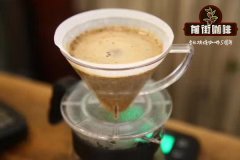
Costa Rican coffee, Costa Rican Mozart, Costa Rican coffee.
Professional coffee knowledge exchange more coffee bean information please follow the coffee workshop (Wechat official account cafe_style) filter cup: hario V60; grindability: 5R (Chinese standard 20 sieve pass rate 58%); powder-to-water ratio: close to 1V15; three-stage extraction
Related
- Beginners will see the "Coffee pull flower" guide!
- What is the difference between ice blog purified milk and ordinary milk coffee?
- Why is the Philippines the largest producer of crops in Liberia?
- For coffee extraction, should the fine powder be retained?
- How does extracted espresso fill pressed powder? How much strength does it take to press the powder?
- How to make jasmine cold extract coffee? Is the jasmine + latte good?
- Will this little toy really make the coffee taste better? How does Lily Drip affect coffee extraction?
- Will the action of slapping the filter cup also affect coffee extraction?
- What's the difference between powder-to-water ratio and powder-to-liquid ratio?
- What is the Ethiopian local species? What does it have to do with Heirloom native species?

